Can you really remove lint forever? And can you do it without a roller? Those seem to be the million-dollar questions these days.
Lint is the bane of every adult’s life. It has a way of sneaking between the folds of the designer shirts and pants that you paid an arm and a leg for.
The best ways to remove lint from clothes without a roller are:
- Use white vinegar
- Wash the clothes inside out
- Use dryer sheets
- Apply the ‘air fluff’ setting
- Use a hairdryer
- Use pumice stone
- With a soft clothes brush
- With masking tape
- Use antistatic spray
- With a scouring pad
- Use contact paper
But what is lint in the first place? And do you have to suffer through removing it from clothes every time you put them in the washer?
This guide answers your questions and shows you how to get rid of lint even without a roller and how to minimize the lint in the laundry in the first place.
What is Lint? And Why Does it Stick to Laundry?
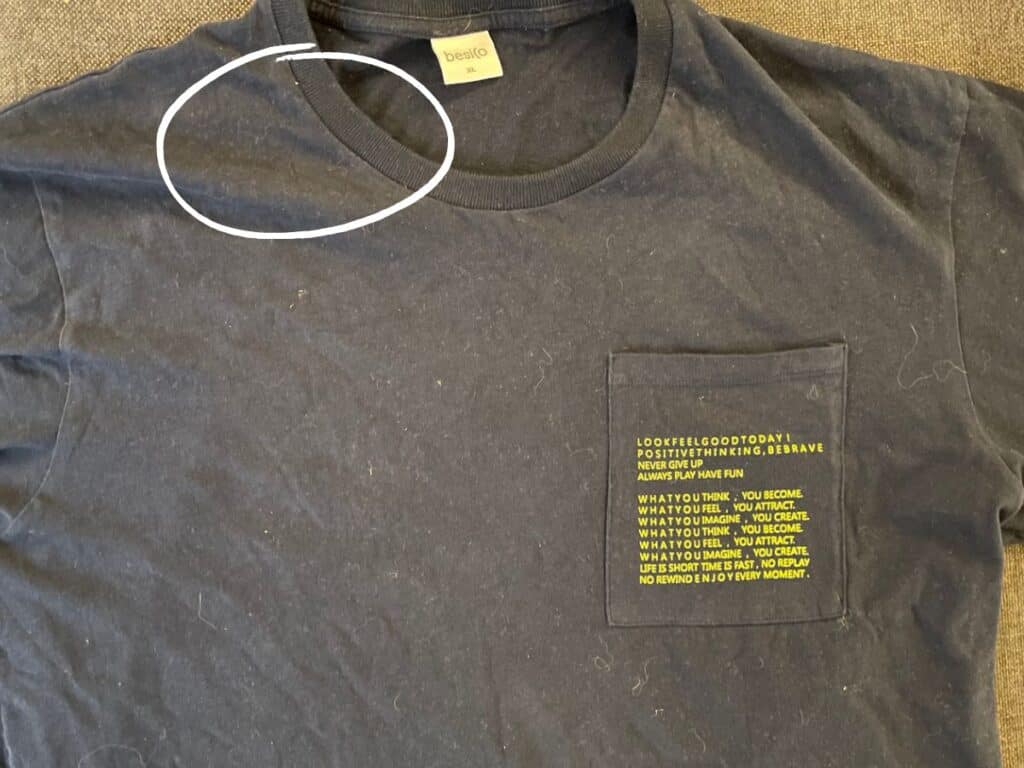
Lint is the fiber and fuzz that unravels out of the fabrics and swims around in the tub.
Not all clothes shed lint, but most will allow lint to stick freely and easily. Some of the biggest lint producers are natural fabrics such as linen, cotton, and wool.
But even synthetics shed lint as well. Especially if they’re thick and have a pile such as blankets, rugs, and curtains.
Clothes shed lint regardless of their age. But for the most part, the older the clothes, the more lint they shed. Lint is the natural product of wear and tear as short fibers detach from the textile and float around.
In the washer, lint is excessive during the washing cycle. It swims in the water, and when it comes in contact with other fabrics, it will stick to them and pile up.
But even during the drying cycle, the clothes will shed more lint and attract more of it.
The main cause of this is the high speed of spinning. It accelerates the unraveling of the short fibers and also facilitates their piling up on other fabrics.
Some fabrics have a higher tendency to attract lint. These include velvet, cashmere, and silk. The smooth surface creates a static that helps glue the tiny fabrics of lint to the clothes.
Unfortunately, it also makes it harder for you to remove lint as well.
11 Ways to Remove Lint From Clothes (Without a roller)
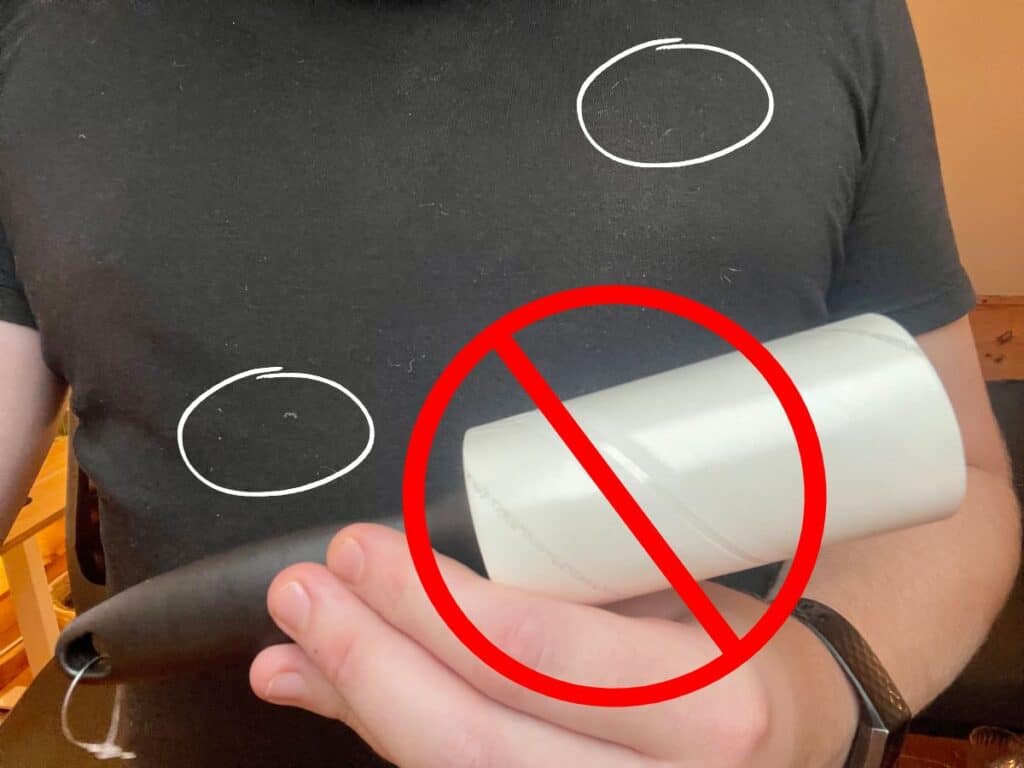
Removing lint from clothes is hard, but it’s not impossible. Although the roller does a good job pulling every last fiber of lint off the clothes, it’s not the only way you can get your laundry all cleaned up and lint-free.
The following 11 methods are proven to work just as effectively as a roller, if not better. Some will work during the washing or drying cycles, while others can only be used after the laundry is dry.
Give each one a try and see which method works best for you.
1. Use White Vinegar
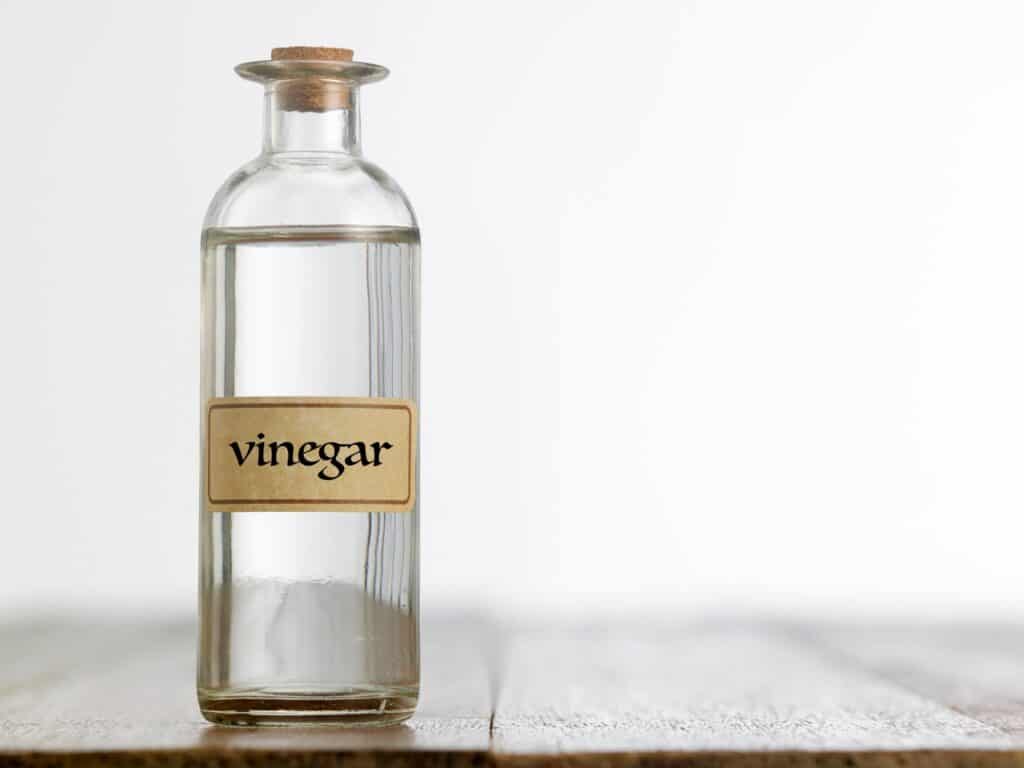
White vinegar is excellent for breaking stains and cleaning soiled clothes. It also acts as a natural fabric softener giving the clothes a fresh look and feel.
Another advantage to using white vinegar in the washer is that it removes odors better than laundry detergents.
But for our purpose today, white vinegar does a great job preventing static which keeps lint off the surface of the fabrics in the washer.
Add it during the washing cycle and before you start the washer, and then again during the rinse cycle. You’ll need one cup of white vinegar each time.
The only drawback to this method is that it won’t stop lint buildup during the dry cycle.
More on using vinegar in your washer here.
2. Wash the Clothes Inside Out
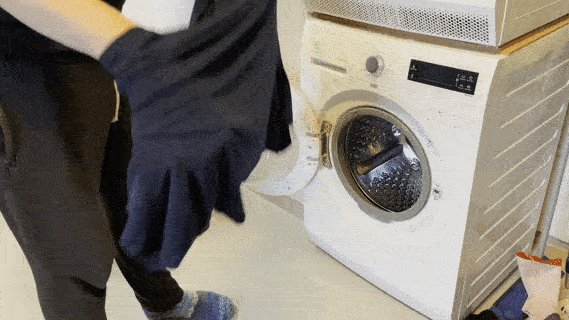
You often read that you should wash the clothes inside out. If you never followed that piece of advice or never knew why you had to turn the clothes inside out before putting them into the washer, lint is the answer.
The idea is that lint sticks to the surface of the clothes but doesn’t penetrate the fabrics. By washing the clothes inside out, you invite lint to collect on the inside of the clothes leaving the outside practically lint-free.
When the clothes dry out, you turn them back without even bothering with removing the lint at all. This little trick also protects the colors and keeps the fabrics in good shape for longer.
3. Use Dryer Sheets
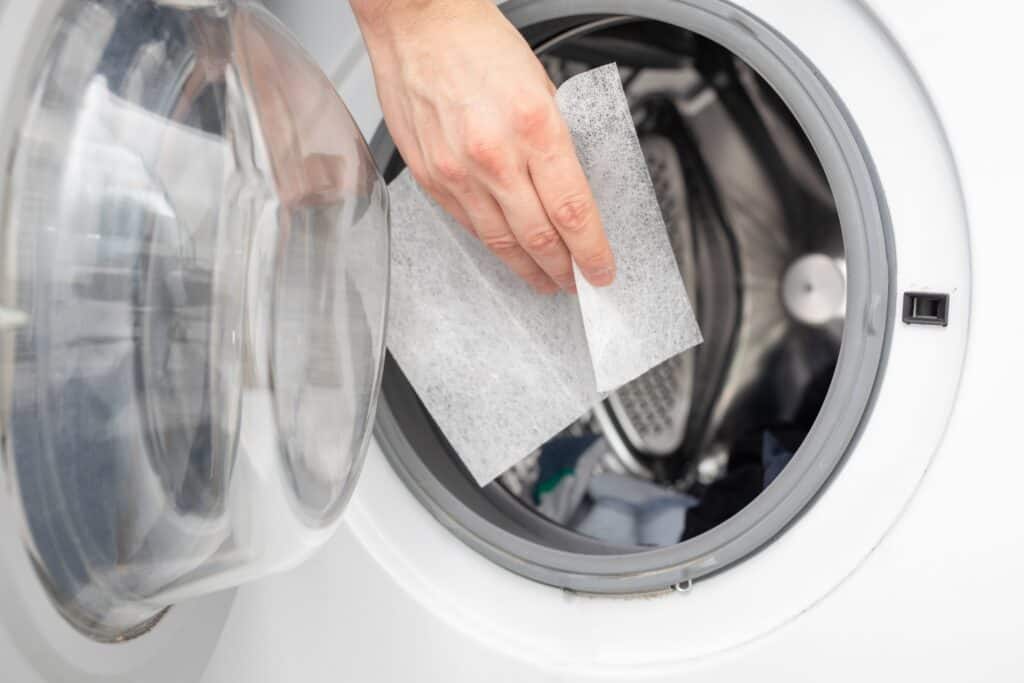
One of the main benefits of using dryer sheets is that they eliminate static to prevent the clothes from sticking together and getting entangled.
By eliminating static, you also get less lint on the laundry since static is the force that glues lint to the clothes in the first place.
You can use dryer sheets in combination with white vinegar to prevent static throughout the three wash cycles.
But dryer sheets also work just as well, even outside of the dryer. You can use them as an alternative to rollers to pull out the lint from already-dry clothes.
It might not be the most cost-effective solution, but it works in a pinch.
4. Apply ‘Air Fluff’ Setting
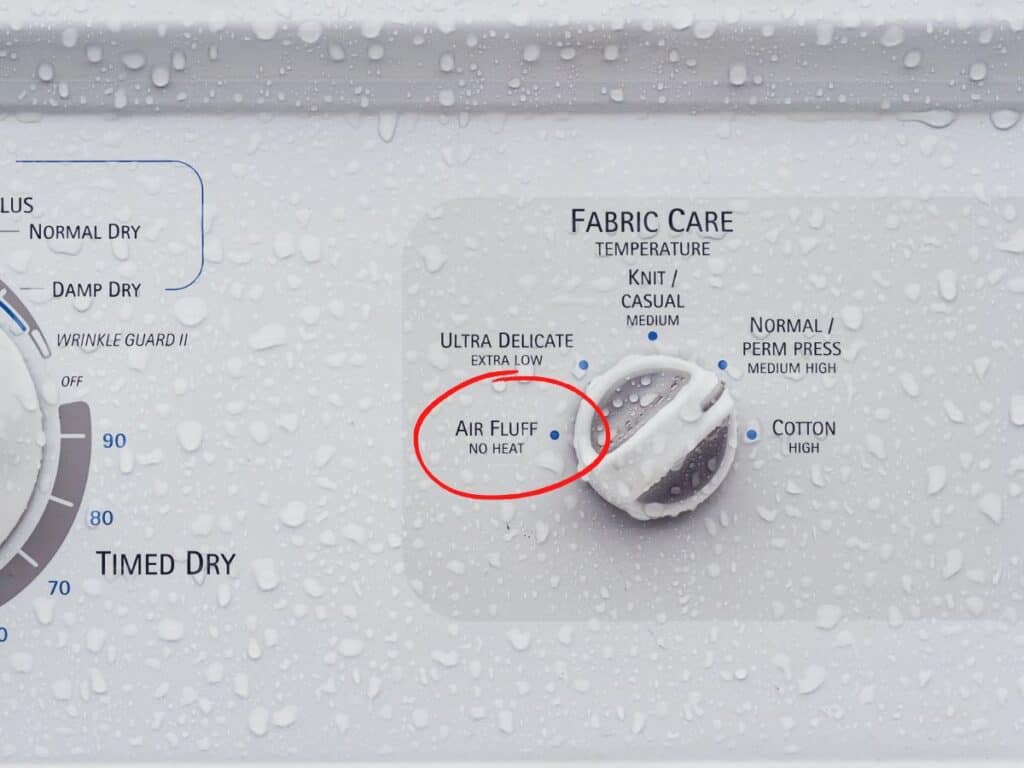
Your dryer has many settings. One of those settings is the ‘air fluff’ feature. It goes by many names, including “air dry” and “air only.”
But whatever the name it has on your dryer, you should always use it. It’s a handy feature that flushes the clothes with a jet of air at room temperature to flush out the lint.
Since the dryer doesn’t heat up the air, the air fluff setting won’t consume extra energy. So where does the lint go?
Once it gets dislodged from the clothes, the steam of air pushes it toward the lint filter, where you can later collect it and dispose of it in the trash.
5. Use a Hairdryer
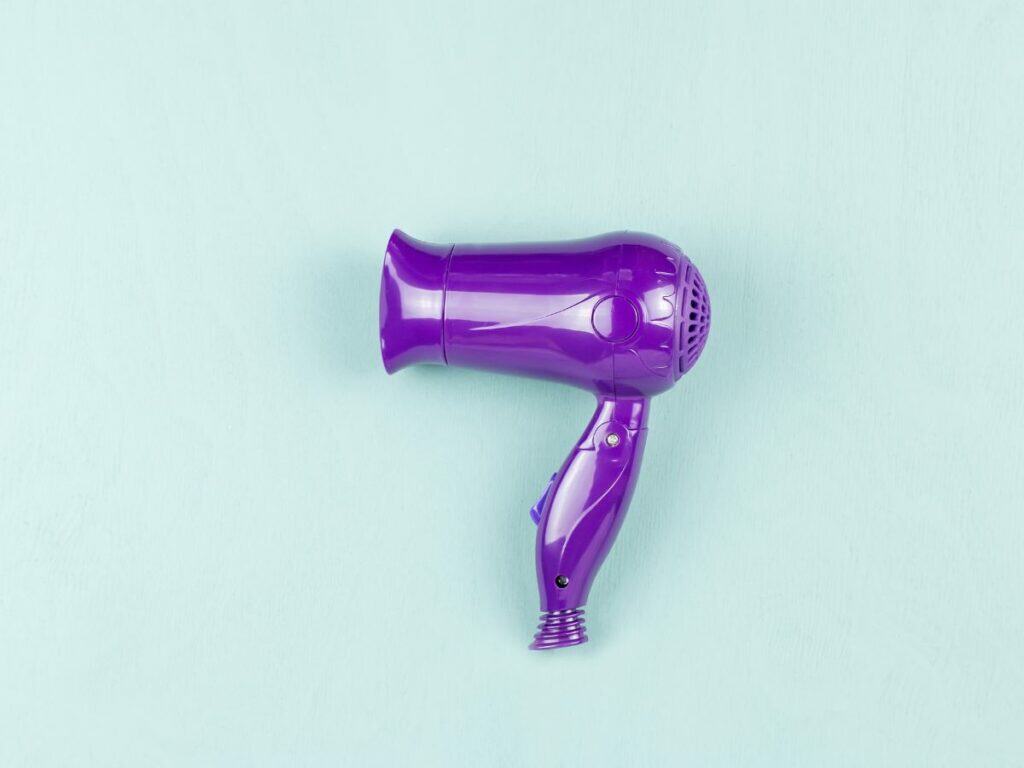
Not all dryers would have the air fluff setting. But if you don’t have it on your machine, you can use a hairdryer to get the same result.
The hair dryer pushes a stream of hot air at the surface of the clothes. This helps detach the lint off the surface.
Ideally, you’ll need to set the hairdryer to the highest setting to increase the airflow. But that can have two problems.
The first is excessive heat which could damage sensitive fabrics such as synthetics and lace underwear.
The second issue is that the air will push the flint off the clothes, where it will float and land on other fabrics.
It’s kind of messy. So always do it in your backyard or on the balcony where the lint wouldn’t make a mess of the place.
Hair dryers are also great in combination with a towel if you want to dry clothes really fast.
6. Use Pumice Stone
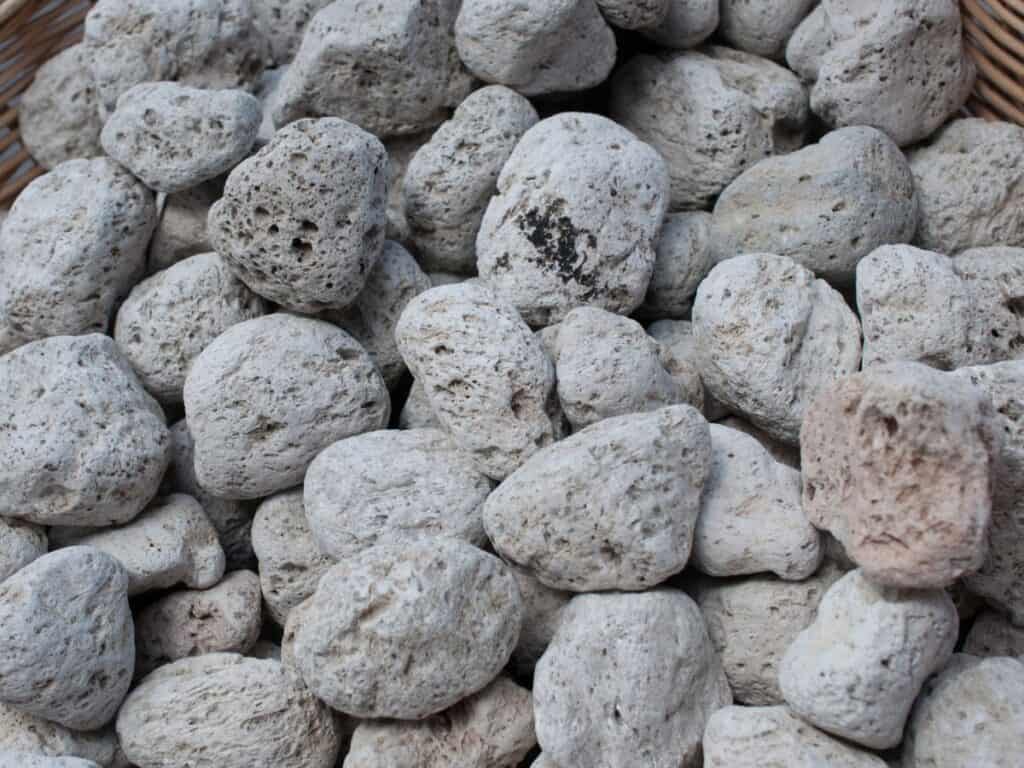
If you suffer from rough skin on the soles of your feet, then you undoubtedly are familiar with a pumice stone.
It’s a piece of porous stone with a rough surface that you use to scrape off the dead skin on your feet.
Well, now is the time to put it to a different use.
Apply the pumice stone to the lint-covered fabric and scrape it off. It works like a charm. But unlike a roller, you’ll have to work hard on the lint to get it all off the fabrics.
Keep in mind that the rough pumice stone might damage the fabrics. So only use it on thick fabrics such as jeans, cotton, and linen.
Also, don’t use too much force. Just use it gently and clean the lint off the stone by putting it under running water.
Pumice stones are also great for removing pilling from your clothes. Learn more about it here.
7. With a Soft Clothes Brush
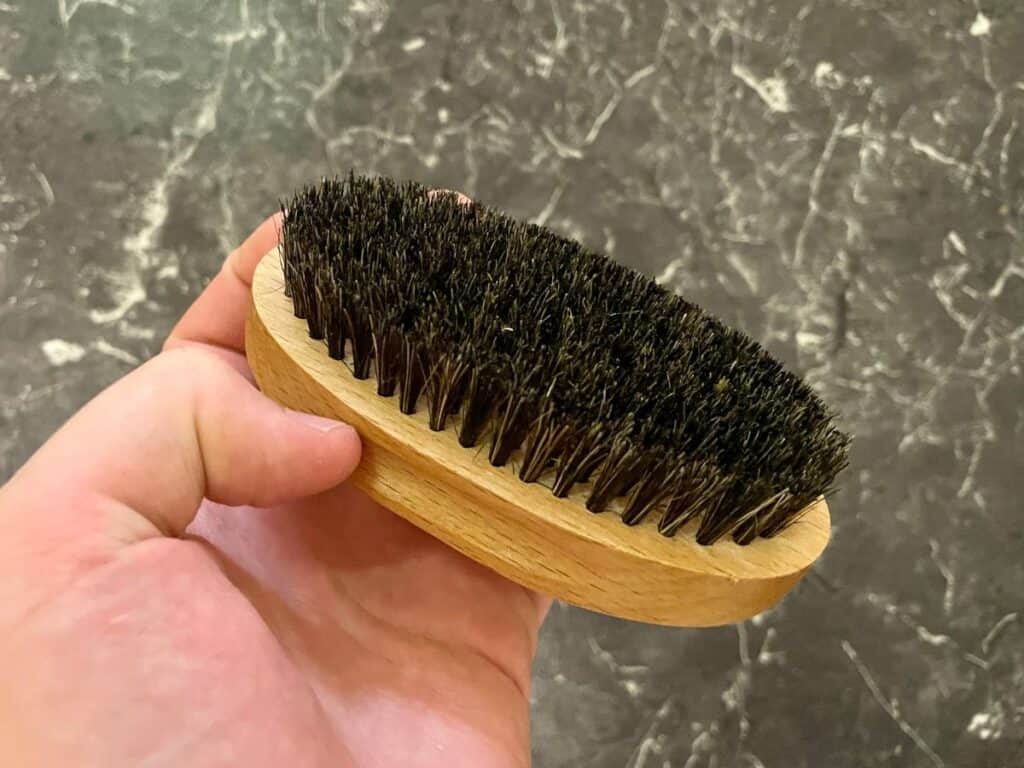
If you don’t have a pumice stone, that means you have smooth feet. Congratulations! As for the lint, you can collect it off the laundry with a soft clothes brush.
Just like the pumice stone, the clothes brush scrapes the lint off the dry fabrics and collects it among its bristles.
But unlike the pumice stone, the clothes brush will not damage the fabrics or produce more lint than it collects.
Make sure to clean the brush thoroughly after going through each item of clothing. That way, you won’t transfer lint between different items.
8. With Masking Tape
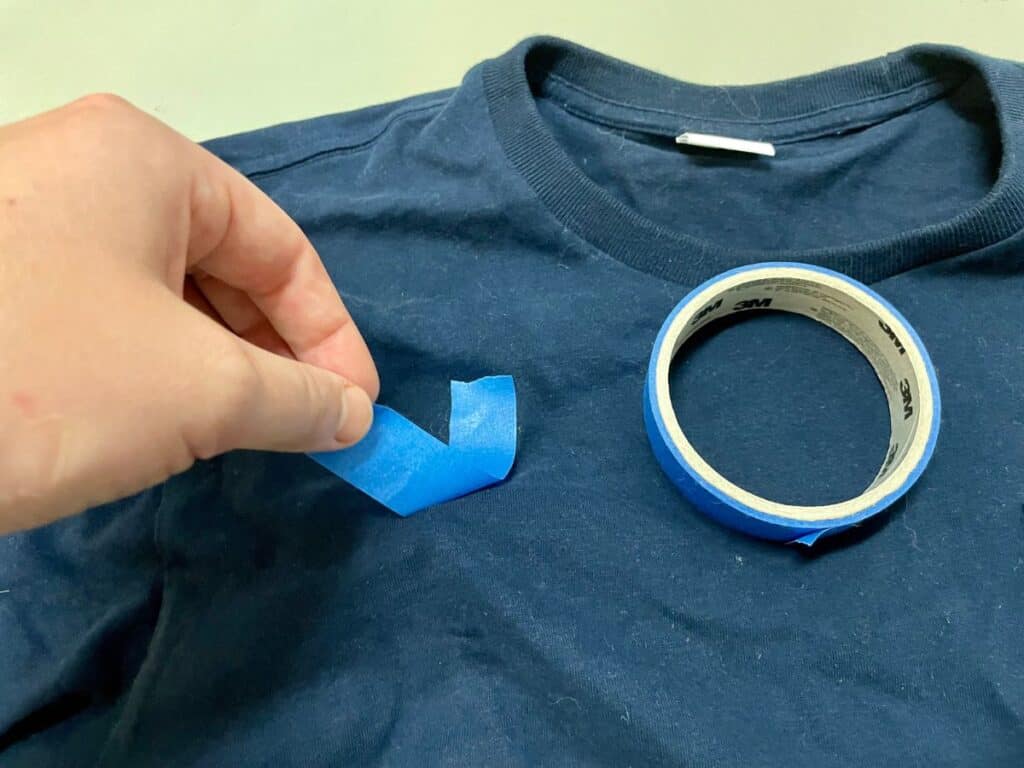
If none of the above options works for you or you don’t have any of them, then use masking tape. It works the same way as a roller.
But instead of having the sticky side out, the tape will have the sticky side in. Unspool some tape and apply it to the fabric to lift the lint.
If you have a lot of lint, you might go through a few rolls of masking tape before you’re done. It’s not the most convenient solution, but if you need a piece of clothing urgently, this solution will help.
9. Use Anti Static Spray

People use an antistatic spray to prevent clothes from sticking to their skin.
Friction creates static, which makes some items of clothing cling to your body. It’s the same force that makes lint cling on to fabrics as well.
If you already have antistatic spray lying around, then use it on the laundry. Make sure the laundry is dry before you spray it.
Then use a dry sponge to collect the lint. It should come off easily.
10. With a Scouring Pad
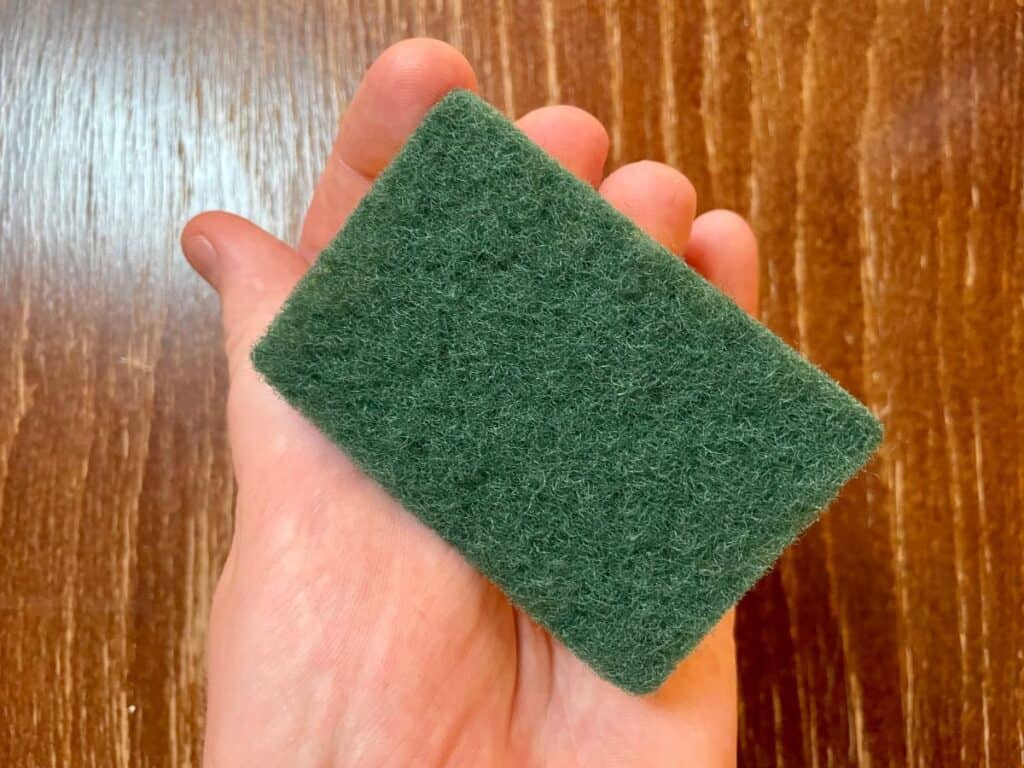
Scouring pads are like the rough part of Velcro. Usually, you’d use it in the kitchen to scrape off grease and make it easier to wash the pots.
A scouring pad will work the same way a pumice stone or a clothes brush would. But watch out for those rough surfaces. They can damage the fabrics if you’re not careful.
11. Contact Paper

Contact paper is just like a roller. It has two sides, and one of them is sticky.
Apply the sticky side of the contact paper on the lint to detach it from the fabric.
How much contact paper you’ll need depends on the amount of lint. I’d recommend you only use it on a large patch of lint or in case of emergency.
How can You Prevent Lint from Getting into Clothes?
When it comes to lint, prevention is a better option than treatment. If you can put a stop to lint sticking to your laundry during the washing process, you wouldn’t have to waste time trying to remove it later on.
So how can you prevent lint from getting into clothes? You’ll have to get a little creative and think out of the box. Here are a few ideas to help you out.
- Use Easy Cycles: As I stated earlier, fast spinning and water agitation are the main causes of releasing lint in the first place. So using a gentle cycle that uses low spinning speeds and doesn’t agitate the water more than necessary can prevent the unraveling of the short fabrics and keep lint at a minimum.
- Don’t Mix Rough with Soft Fabrics: Items of clothes such as pants, skirts, and jackets that have zippers and buttons are heavy lint producers. The friction unravels the lint. So wash those items of clothes alone or place them in laundry bags to reduce friction.
- Separate Lint Producers: Other notorious lint producers are thick fabrics with pile, such as blankets, rugs, and curtains, among others. Wool fabrics also shed a lot of lint. So wash these items separately in their own load.
- Line Drying: The dryer is a significant producer of lint as well, thanks mainly to the high spin speed. You can cut the amount of lint on the laundry by half if you skip the drying cycle and put the clothes out to dry. It might take longer to dry, but the laundry will be a lot cleaner that way.
Conclusion
You don’t need a roller to remove lint from clothes.
You can use dryer sheets, a pumice stone, a soft clothes brush, masking tape, or even a hairdryer. You can also add white vinegar to the laundry during the wash and rinse cycles to dampen the lint in the washer.
I also wrote a guide on the best dryer balls to remove pet hair that may interest you to check out next.
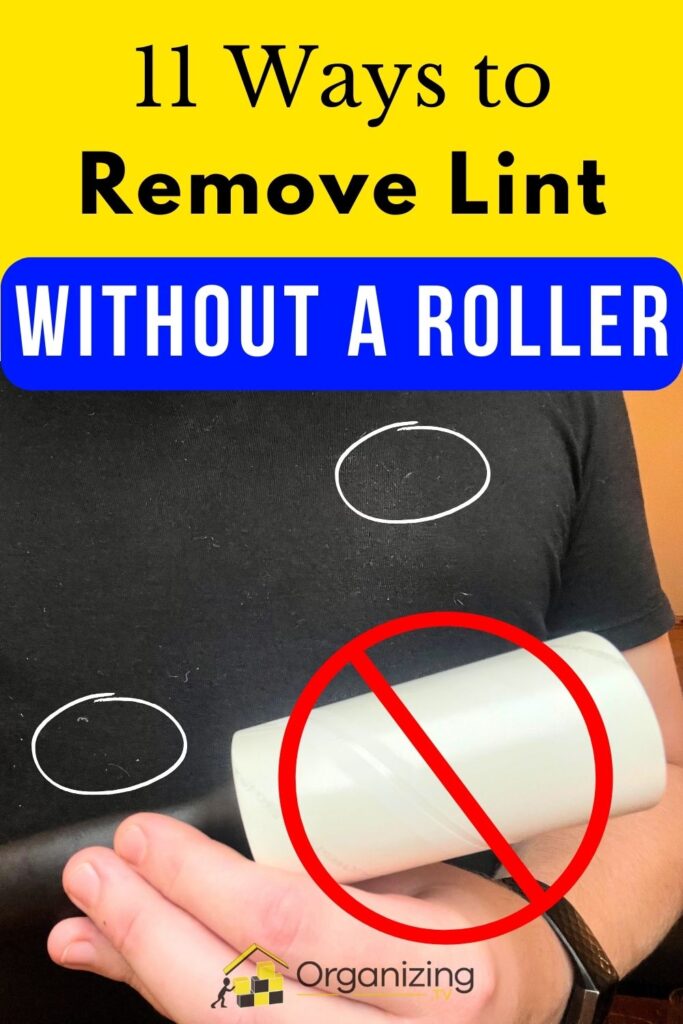

I’m an expert wardrobe organizer and a bit of a clean freak. I created this website and its YouTube channel to share practical guides about laundry and organizing. My teachings have been featured in multiple large news publications, and I’ve self-published two wardrobe organizing books and an entire course on the subject.

